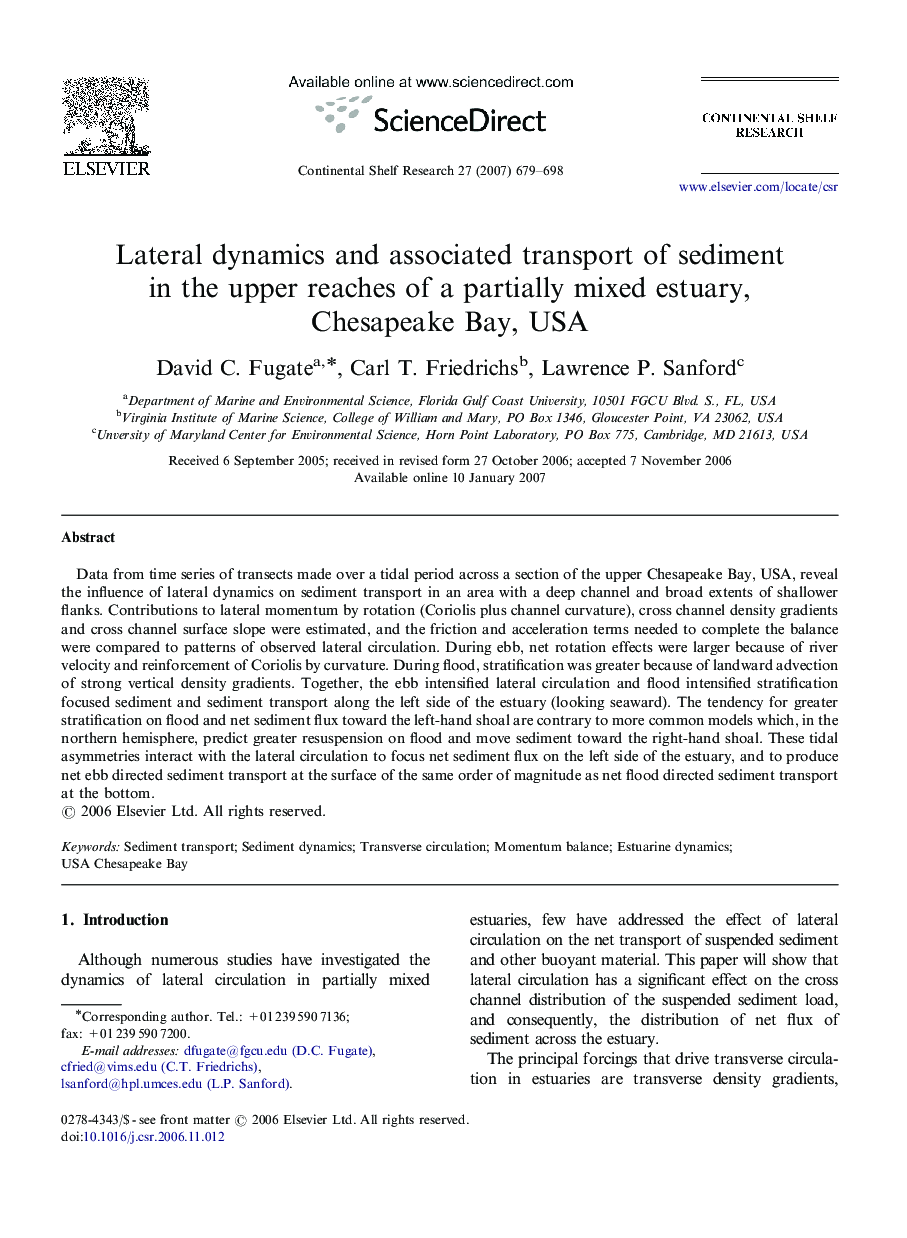| Article ID | Journal | Published Year | Pages | File Type |
|---|---|---|---|---|
| 4533817 | Continental Shelf Research | 2007 | 20 Pages |
Abstract
Data from time series of transects made over a tidal period across a section of the upper Chesapeake Bay, USA, reveal the influence of lateral dynamics on sediment transport in an area with a deep channel and broad extents of shallower flanks. Contributions to lateral momentum by rotation (Coriolis plus channel curvature), cross channel density gradients and cross channel surface slope were estimated, and the friction and acceleration terms needed to complete the balance were compared to patterns of observed lateral circulation. During ebb, net rotation effects were larger because of river velocity and reinforcement of Coriolis by curvature. During flood, stratification was greater because of landward advection of strong vertical density gradients. Together, the ebb intensified lateral circulation and flood intensified stratification focused sediment and sediment transport along the left side of the estuary (looking seaward). The tendency for greater stratification on flood and net sediment flux toward the left-hand shoal are contrary to more common models which, in the northern hemisphere, predict greater resuspension on flood and move sediment toward the right-hand shoal. These tidal asymmetries interact with the lateral circulation to focus net sediment flux on the left side of the estuary, and to produce net ebb directed sediment transport at the surface of the same order of magnitude as net flood directed sediment transport at the bottom.
Related Topics
Physical Sciences and Engineering
Earth and Planetary Sciences
Geology
Authors
David C. Fugate, Carl T. Friedrichs, Lawrence P. Sanford,
